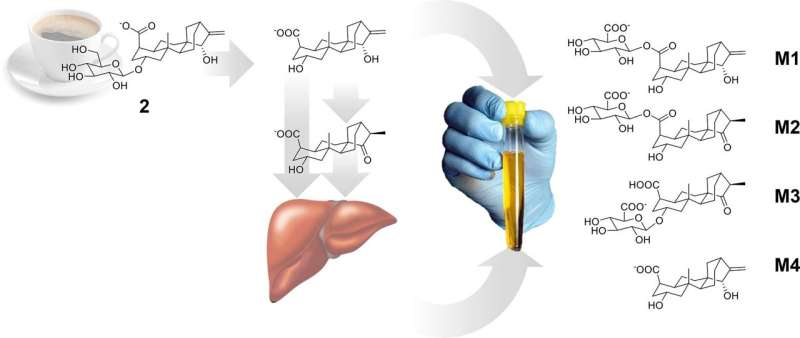
In search of new biomarkers for nutrition and health studies, a research team from the Leibniz Institute for Food Systems Biology at the Technical University of Munich (LSB) has identified and structurally characterized three metabolites that could be considered as specific markers for individual coffee consumption.
These are degradation products of a group of substances that are formed in large quantities during coffee roasting but are otherwise rarely found in other foods. This and the fact that the potential biomarkers can be detected in very small amounts of urine make them interesting for future human studies.
According to Statista, coffee is by far the most popular hot beverage in Germany. On average, around 168 liters are consumed per person per year. It is not only a stimulant, but also has positive health properties. For example, numerous observational studies indicate that moderate coffee consumption is associated with a reduced risk of type 2 diabetes or liver disease.
Biomarkers instead of self-reporting
However, with regard to the amounts of coffee drunk, such observational studies rely on participants’ self-reports, which are difficult to verify. “Complementary studies would therefore be desirable in which coffee consumption could be objectively verified using biomarkers in order to determine the health value of coffee even more reliably,” says Roman Lang, who heads the Biosystems Chemistry & Human Metabolism research group at LSB.
Although earlier studies had already pointed to biomarker candidates, research on this had stalled for years. The substances previously detected were metabolic intermediates or breakdown products (metabolites) of various coffee compounds whose urine concentrations correlated strongly with the level of coffee consumption. At the time, however, the researchers had not succeeded in clearly identifying the molecular structure of the metabolites.
Use of high-performance analytical technologies
Therefore, as part of a pilot study, Roman Lang’s team examined the urine samples of six people after they had consumed 400 ml of coffee three hours earlier. With the help of high-performance analytical technologies and self-produced reference substances, the team succeeded in identifying three candidate biomarkers in the urine and, for the first time, in clearly determining their chemical structure. These are a glucuronic acid conjugate of atractyligenin, whose glycosides are present in relatively high concentrations in coffee beverages, and two glucuronic acid derivatives of an atractyligenin oxidation product.
“Our findings help advance biomarker research,” says Roman Lang. Dose-response studies, pharmacokinetics and human studies with much larger numbers of subjects must now follow to test the biomarker suitability of the identified compounds, he adds. Veronika Somoza, director of the Freising-based Leibniz Institute adds, “Food-specific biomarkers are important tools to explore the health effects of food. Therefore, part of our scientific work at LSB is also focused on finding biomarkers for food consumption.”
More information: Roman Lang et al, Metabolites of dietary atractyligenin glucoside in coffee drinkers’ urine, Food Chemistry (2022). DOI: 10.1016/j.foodchem.2022.135026
Journal information: Food Chemistry
Provided by Leibniz-Institut für Lebensmittel-Systembiologie

